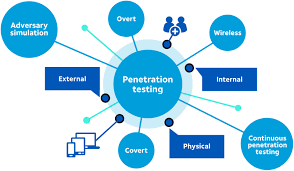How to Conduct an Effective Vulnerability Assessment
A
vulnerability assessment is an essential process for identifying and addressing
weaknesses in an organization’s security systems, networks, and applications.
By systematically evaluating vulnerabilities, businesses can mitigate risks,
prevent potential breaches, and safeguard sensitive data. Conducting an
effective vulnerability
assessment requires a structured approach that combines automated
tools, manual testing, and comprehensive analysis to ensure no security gaps
are overlooked. This process is a cornerstone of proactive cybersecurity
measures, enabling organizations to maintain a strong security posture in an
ever-evolving threat landscape.
Importance of
Vulnerability Assessment
Vulnerability
assessment plays a critical role in protecting organizations from cyber
threats. It provides insights into potential attack vectors and identifies
weaknesses that could be exploited by malicious actors. The benefits of
vulnerability assessments include:
Enhanced
Security: Identify and remediate vulnerabilities before they are exploited.
Regulatory
Compliance: Meet industry standards and legal requirements such as GDPR, PCI
DSS, and HIPAA.
Cost
Savings: Avoid costly breaches and minimize downtime by addressing issues
proactively.
Risk
Prioritization: Focus resources on addressing the most critical
vulnerabilities.
Continuous
Improvement: Regular assessments help organizations adapt to evolving threats
and maintain robust defenses.
By
prioritizing vulnerability assessments, organizations can build a secure
foundation for their digital infrastructure and protect their assets from
potential harm.
Steps to Conduct an Effective Vulnerability Assessment
Conducting a
vulnerability assessment involves several key steps that ensure comprehensive
coverage and actionable results. These steps include:
Define the
Scope: Clearly outline the systems, applications, and networks to be assessed,
taking into account the organization’s goals and priorities.
Gather
Information: Collect details about the target environment, including network
topology, operating systems, and installed applications.
Identify
Vulnerabilities: Use automated scanning tools and manual techniques to identify
potential weaknesses.
Analyze and
Validate Findings: Evaluate the identified vulnerabilities to determine their
validity, impact, and likelihood of exploitation.
Prioritize
Risks: Categorize vulnerabilities based on their severity and potential impact
to prioritize remediation efforts.
Generate a Report:
Document the
findings, including a detailed analysis of vulnerabilities, their potential
impact, and recommended remediation strategies.
Implement
Remediation: Address identified vulnerabilities by applying patches,
reconfiguring systems, or implementing additional security measures.
Monitor and
Review: Regularly reassess the environment to ensure that vulnerabilities have
been effectively addressed and to identify new risks.
Following
these steps ensures that the vulnerability assessment process is thorough, efficient,
and aligned with the organization’s security objectives.
Tools and Techniques for Vulnerability Assessment
Effective
vulnerability assessments rely on a combination of tools and techniques to
identify and analyze potential weaknesses. Key tools and techniques include:
Automated
Scanners: Tools such as Nessus, Qualys, and OpenVAS can quickly identify
vulnerabilities across networks and applications.
Manual
Testing: Security experts use manual techniques to validate findings, uncover
complex vulnerabilities, and simulate real-world attack scenarios.
Configuration
Reviews: Evaluate system configurations to identify misconfigurations or
deviations from security best practices.
Patch Management:
Assess the
status of software updates and ensure that patches are applied in a timely
manner.
Threat
Intelligence: Leverage threat intelligence to identify vulnerabilities
associated with emerging threats and attack trends.
Combining
these tools and techniques ensures that the vulnerability assessment process is
comprehensive and effective, providing organizations with actionable insights
to strengthen their security posture.
Challenges and Best Practices for Vulnerability Assessment
While
vulnerability assessments are essential for maintaining security, they can
present challenges that organizations must address to ensure success. Common
challenges include:
Resource
Constraints: Limited time, budget, or personnel can hinder the assessment
process.
False
Positives: Automated tools may produce false positives, requiring manual
validation.
Evolving
Threats: New vulnerabilities and attack techniques constantly emerge, making it
difficult to stay ahead.
Complex
Environments: Large or complex IT environments can make it challenging to
identify all potential vulnerabilities.
To overcome these challenges, organizations should adopt best practices
such as:
Regular
Assessments: Conduct vulnerability assessments on a regular basis to stay ahead
of evolving threats.
Comprehensive
Scoping: Clearly define the scope of the assessment to ensure all critical
systems and assets are covered.
Prioritization:
Focus on addressing high-risk vulnerabilities first to maximize the impact of
remediation efforts.
Collaboration:
Involve cross-functional teams, including IT, security, and management, to
ensure a holistic approach.
Continuous
Monitoring: Implement ongoing monitoring and vulnerability management processes
to identify and address risks in real time.
Adopting
these best practices ensures that vulnerability assessments are effective and
aligned with the organization’s security goals.
Vulnerability Assessment and Regulatory Compliance
Regulatory
compliance is a significant driver for conducting vulnerability assessments.
Many industries require organizations to perform regular security assessments
to protect sensitive data and maintain operational integrity. Examples of
compliance-focused vulnerability assessments include:
PCI DSS:
Assess the security of payment card environments to prevent fraud and protect
customer data.
HIPAA:
Safeguard electronic protected health information (ePHI) to ensure patient
privacy.
GDPR:
Identify and address vulnerabilities that could lead to unauthorized access to
personal data.
ISO 27001:
Support the implementation of an information security management system (ISMS)
to safeguard organizational assets.
By aligning
vulnerability assessments with regulatory requirements, organizations can
achieve compliance while enhancing their overall security posture.
Conclusion
Conducting
an effective vulnerability
assessment is a critical component of any comprehensive cybersecurity
strategy. By identifying and addressing vulnerabilities, organizations can
reduce risks, ensure regulatory compliance, and protect sensitive data from
potential threats. A structured approach, supported by the right tools and best
practices, ensures that the assessment process is thorough and efficient.
Regular assessments, combined with continuous monitoring and proactive
remediation, enable organizations to stay ahead of evolving threats and
maintain a strong security posture. Prioritize vulnerability assessments to
safeguard your organization’s assets, reputation, and long-term success
.jpeg)
.jpeg)

.jpeg)
Comments
Post a Comment